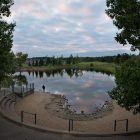Arts & Culture
STARGAZING
August, 2016
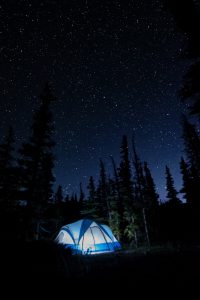 Look up—way up—at Mother Nature’s time machine
Look up—way up—at Mother Nature’s time machine
| It’s crazy to think that all those stars we see on a clear night could already be gone. That’s why stargazing is like witnessing time travel in its simplest form. This Einsteinian fact has everything to do with the distance that light has to travel to get to us. Witnessing this blast from the past, however, is hindered by the presence of light pollution, which makes all but the brightest stars invisible. Fortunately, areas of land across the world are being set aside where the only light to be seen is from the sky above you. So, getting out of the city to take in the full glory of a cloudless night is easy—all you need is time, a few astronomy basics, plus a blanket to keep you warm. Take a look. |
| Stargazing and city living may seem an unlikely mix, but being limited to the stars that are visible in urban areas can help you pick out the brighter ones with just a pair of binoculars. You can also invest in one of three basic types of telescopes: a refractor that uses lenses, a reflector that uses mirrors or a -catadioptric that uses lenses and mirrors. Remember, however, that moonlight can hinder good sky viewing. Also, the moon rises about 50 minutes later each day because it constantly shifts about 13 degrees towards the east. Keep this in mind to minimize moonlight interference when you set up your telescope or point your binoculars towards the heavens. |
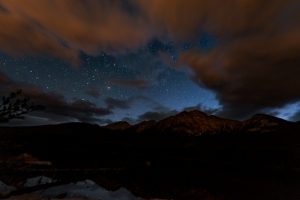 Dark-Sky Preserves
Dark-Sky Preserves
The Royal Astronomical Society of Canada (RASC) describes dark-sky preserves (DSP) as land found in or around parks that have a reduction or elimination of artificial light. Besides being a great place to view the night sky, DSPs also help nocturnal animals, plants and humans keep to their normal Circadian rhythms.
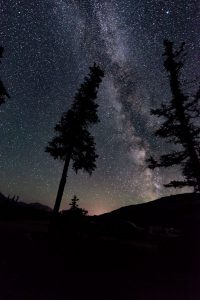 Beaver Hills Dark-Sky Preserve, Alberta
Beaver Hills Dark-Sky Preserve, Alberta
Location: Elk Island National Park, including Cooking-Lake Blackfoot Provincial Area
Size: 293 square km
RASC designation: Received DSP status Sept. 2006, on Elk Island’s 100th Anniversary
Astronomy in the park: The Edmonton RASC has been visiting this preserve for over 20 years. It holds public astronomy programs, but also raises awareness about the damaging effects that light pollution has on the environment.
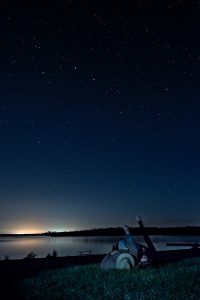
Jasper National Park
Dark-Sky Preserve, Alberta
Locations: Marmot Meadows, Athabasca Glacier, Jasper House and Pyramid Island
Size: 11,228 square km
RASC designation: Received DSP status March 2011
Astronomy in the park: October is Dark Sky Month in Jasper and is celebrated with a Dark-Sky Festival. This year’s event runs October 14 to 23.
| Stargazing really doesn’t require more than a healthy dose of wonder and a few astronomy basics. Books and websites are also great resources to help you locate constellations, planets, galaxies or even the International Space Station. NASA’s website is always a wealth of information, and the RASC’s has a list of Canadian star parties to attend, as well as links to all the DSP sites across Canada. Don’t forget about Edmonton Telus World of Science. Its website lists classes and upcoming events. |
So whether you are new to stargazing or were born with a telescope in your hands, looking up at a star that twinkles back at you is always awe-inspiring—especially when that star’s light took tens-of-thousands of years to reach Earth. t8n
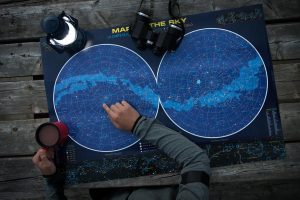
Did You Know?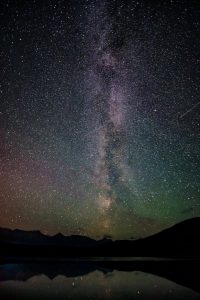
Nocturnal Preserves (NP) are areas of land—usually rural—with little to no artificial lighting and a buffer zone of trees for blocking out artificial light. Urban Star Parks (USP) are similar to NPs but are located within urban areas.
Fun Facts
Canada has the two largest dark-sky preserves in the world!
Wood Buffalo National Park DSP is the world’s largest at 44,807 square km, and coming in second is Jasper National Park DSP at 11,228 square km.






